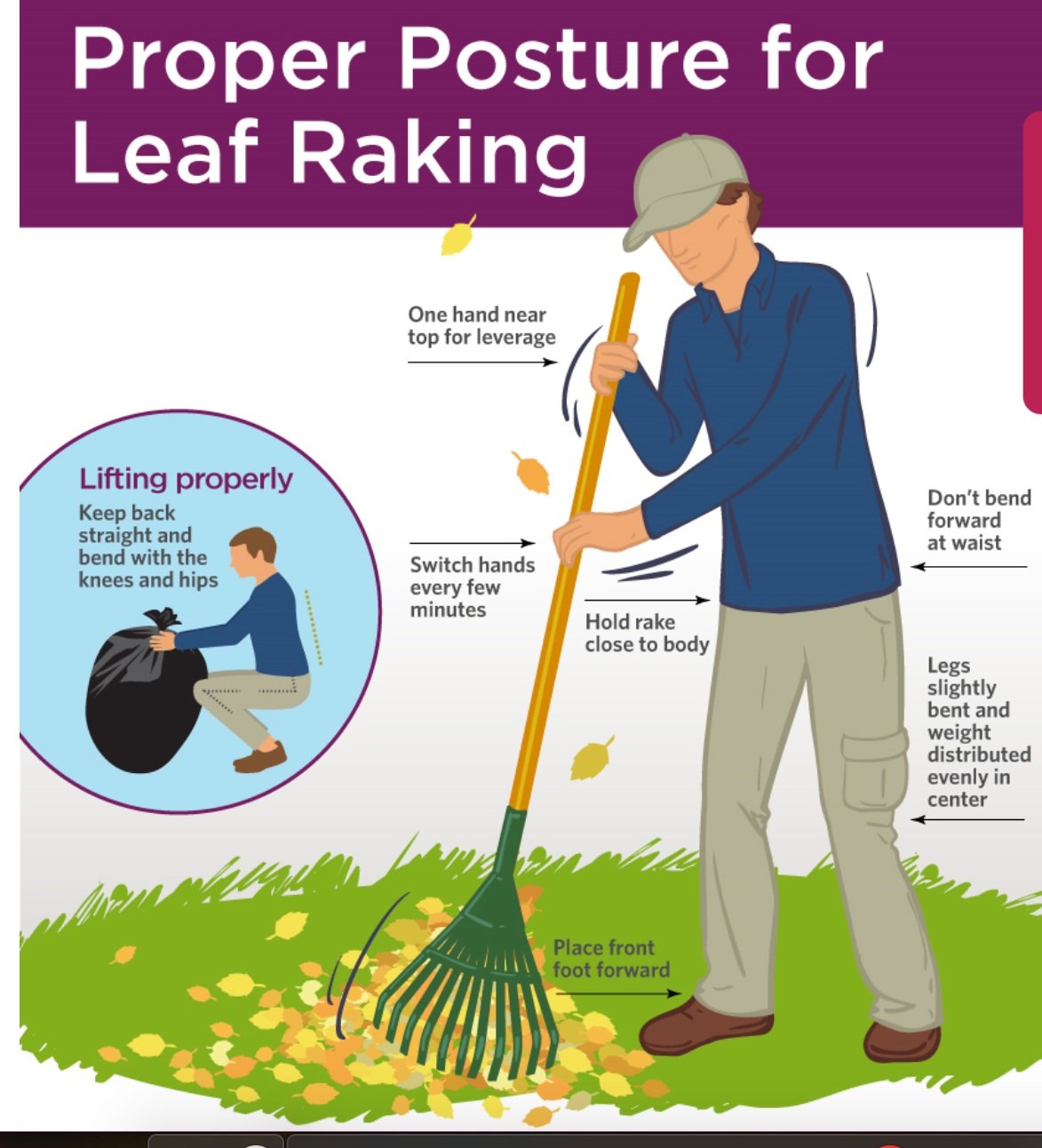How To Protect Your Back When Raking Leaves
Autumn brings with it stunning landscapes of red, gold, and orange leaves. However, the aftermath of the turning of the leaves can involve raking and bagging an enormous number of leaves in our yards. Weekly leaf raking during the fall can take quite a toll on your body if you are using incorrect biomechanics that strains your back, neck, and shoulders. The low back is particularly vulnerable to injury when raking due to the repetitive movements and constant bending and lifting of raking. Check out our tips to protect your back this season when raking leaves!
9 Tips to Protect Your Back When Raking Leaves
Prepare your body for raking. Raking leaves is an intensely physical task that requires repetitive movements that place the body and low back in awkward positions, including twisting, bending, squatting, and kneeling.
a. Prepare your body for raking by engaging in stretching, strengthening, and cardio exercise a few weeks in advance to help prepare the joints and soft tissues of the body for raking. Stretching can include stretching the hamstrings, trunk rotations, Achilles stretches, and shoulder stretches. Strengthening can include planks, side planks, standing rotations, bicep curls, squats, lunges, lat pull downs, and pull-aparts with TheraBand.
b.Warm up the day of raking with a short cardio walk or bike ride to get blood flowing to joints and soft tissues. Gently stretch and start slow as you rake, allowing the body to adjust to the raking motion.
Rake with both sides of your body. Many rake with their dominant side, using their right hand and leg to lead the raking motion if right-handed which causes the muscles and other tissues to strain on just one side of the body. Switch hands and your lead leg regularly to give those muscles a break and build up strength in the same muscles on the other side.
Use a rake that is proportionate to your body. If you use a rake that is too long or too short, this can cause you to alter your posture and strain muscles. It’s also important to consider the width of your rake. A narrow rake makes the weight of the leaves lighter but can make the raking time longer, whereas an extra wide rake gathers more leaves but can place more strain on your back.
Maintain good posture when raking. Stand up straight with a slight bend at the waist, knees slightly bent, and your core tight. Stagger your feet in a scissor stance for greater stability. If you maintain this position with a tight core and straight back, this allows you to pull the rake with your arms, creating a rowing motion rather than a twisting motion. This places the majority of the strain on the arms and the latissimus dorsi muscles, which are better prepared for this repetitive motion than the low back muscles. Don’t overextend your reach as this forces you to flex at the waist and excessively flex the shoulders to extend the rake forward.
Use proper lifting technique. Do not rake and bag wet leaves as wet leaves are heavier and can more easily strain your back. If you do bag leaves, lift properly, bend at the knee, keep the back straight, and use your legs and hips to do the heavy lifting.
Use a tarp instead of bagging leaves. Rake leaves onto a tarp and pull one end of the tarp to move the leaves to the desired location for pick up and leaf removal. Using a tarp can save your back from constantly bending over to pick up leaves to bag them.
Wear appropriate shoes and clothing. While autumn can be chilly, when raking you work up a sweat. Wear layers so that you can remove articles of clothing when you begin to sweat to cool down. Wear non-slip-soled shoes with good support. Good foot support can stop some of the strain from reaching your back.
Use a leaf blower instead of a rake where you can. Use either a hand-held or backpack leaf blower to blow the leaves into one large pile or a tarp to save time and minimize the strain placed on the body when raking.
Pace yourself. Do not try to clear the entire lawn of leaves in one day. Instead, break up your leaf raking weekly and take regular breaks to let your body rest and stretch sore muscles. Do a section of the yard at a time. Small, repeated sessions are safer than one big job in terms of muscle strain and low back injury.

